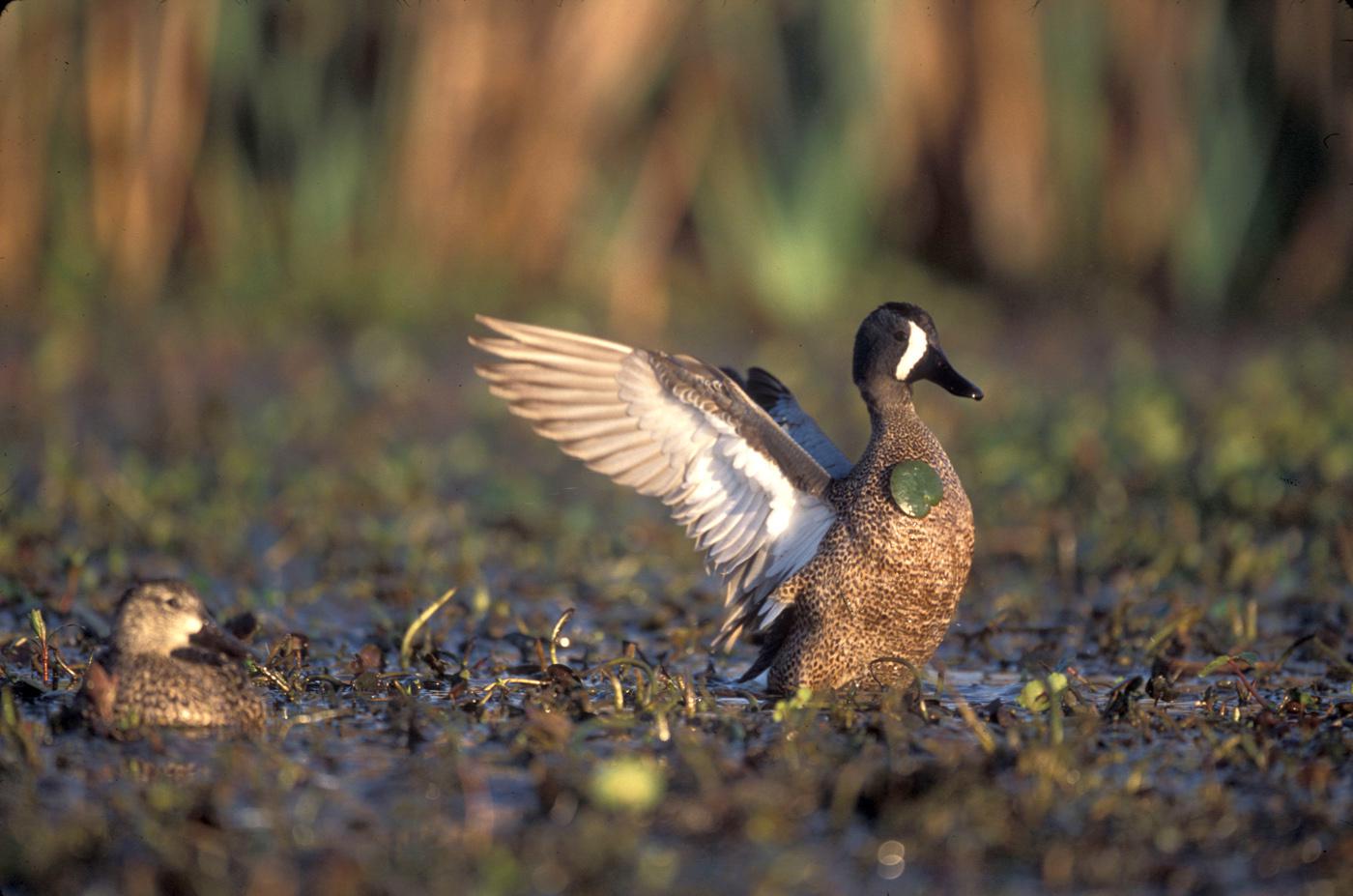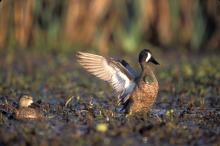Information Possibly Outdated
The information presented on this page was originally released on April 8, 2010. It may not be outdated, but please search our site for more current information. If you plan to quote or reference this information in a publication, please check with the Extension specialist or author before proceeding.
Fewer ducks head south for winter
MISSISSIPPI STATE –While the climate change debate is heating up worldwide, researchers at Mississippi State University are examining recent changes in duck migration patterns.
“In the past few years, we have observed that ducks are not migrating to southern latitudes in abundance or are doing so generally only during severe weather,” said Rick Kaminski, waterfowl ecologist and the James C. Kennedy Endowed Chair in Waterfowl and Wetlands Conservation.
“Our initial thoughts were that ducks were remaining at northern latitudes as a result of warmer weather and available food and habitat, among other factors,” Kaminski said.
To test their theory, Kaminski and Mike Schummer, postdoctoral research and teaching associate in MSU’s Forest and Wildlife Research Center, researched the influence of weather variables on winter duck migration.
“Our goal was to increase our understanding of duck migration patterns for planning habitat and hunting management,” Schummer said.
The research team set out to identify weather conditions that best explained population changes of mallards and other dabbling ducks at midlatitude regions in the Mississippi Flyway, one of the routes followed by migratory birds. The scientists’ results are scheduled for publication in “The Journal of Wildlife Management.”
They also sought to identify patterns and trends in a weather severity index and to model potential the migration of ducks in North America using a variety of climate projections.
Using 10 years of waterfowl survey data provided by the Missouri Department of Conservation and weather data from U.S. Historical Climatology Network Stations, the MSU and Missouri collaborators found that snow and temperature both play a role in duck migration patterns.
“Our findings suggest that dabbling ducks, including northern pintail, gadwall and green-winged teal, migrate before freezing conditions or snow, while mallards generally migrate when freezing temperature and snow have persisted for several days,” Kaminski said.
The scientists collaborated with experts in MSU’s geosciences department to look at the weather severity index for the past 50 years in an effort to help clarify the habitat versus climate debate. While the research is ongoing, preliminary data suggest that most winters since the late 1990s have been warmer than the 50-year average.
The research team has also developed a tool for hunters, biologists and bird-watchers to predict waterfowl movement patterns. A Web-based Duck Migration Forecast has a five-day outlook to indicate when mallards and other dabbling ducks will journey to the South.
Available at http://www.cfr.msstate.edu/kennedychair/weather.asp, the forecast is updated each Monday from November through January.
“The forecast includes areas from Jamestown, N.D., to Memphis, Tenn., and predicts the likelihood of duck migration down the Mississippi Flyway,” Schummer said.
When the research is complete, the information will help biologists and managers determine where and when habitat should be made available for migrating and wintering ducks and will allow hunters to determine the best days to take to the flyways in search of waterfowl.







